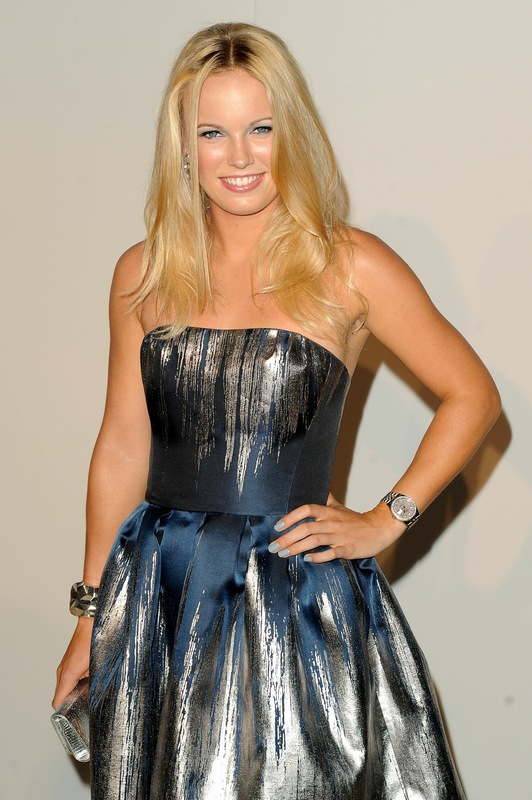NEW YORK – Through one of his characters, Marcellus, a scribbler named Shakespeare said there was “something rotten in the state of Denmark.”
But if the Bard had been among 20,000-or-so ticket-holders at an open-air theatre called Arthur Ashe Stadium yesterday, he might have reconsidered that line from his ancient soap, “Hamlet.”
He would have gazed down at a battleground of blue on which a fair lass named Caroline Wozniacki, was making friends for Denmark, her homeland. But that doesn’t mean she wasn’t capable of doing rotten things to the other person sharing the US Open stage: Maria Sharapova.
A spot in the quarter-finals was at stake in this clash of gorgeous blondes, and Wozniacki – “I knew I could win, but I’d have to fight for every point” – jumped to a 3-1 lead and Sharapova could never catch up, 6-3, 6-4. But it was a roarer for almost two hours, a high-powered slugfest in which Caroline was a rotten sport, committing 10 errors to Maria’s 36, rescuing eight of nine break points. Not exactly a “Welcome to Denmark” banner waved at Sharapova, on her way to the Hall of Fame with Australian, Wimbledon, US titles and a previous 2-0 record against Wozniacki.
But it was kill or be killed with smoking rackets from the baseline. Sharapova said, very softly, “She played well. The best she’s played against me. Improved a lot. She served better, was really smart on the big points. But I had a lot of chances. Being one out of eight break points is pretty bad.”
It’s easy to forget that top-seeded 20-year-old Wozniacki was a finalist last year. She got lost in the maternal miracle of unseeded mom, Kim Clijsters, riding a wild card to the championship, as well as Serena’s semifinal mad scene. Clijsters beat then teen Wozniacki, 7-5, 6-3.
“I knew,” said the greatest Dane, “I had to be ready for the first ball. I knew she’d attack from the beginning, trying to be aggressive. For me it was important to keep as many balls in the court, but still try to move her around and try to dictate as well.”
She kept the ball in play, often in double-digit rallies, striking for winners when she found openings to fortify her 12th straight victory.
Caroline has won four titles this year, the Canadian Open standing out. In the majors she has made the French quarters and the Australian and Wimbledon fourth rounds. She visits her money in Monte Carlo.
Her bloodline, Polish parentage, is athletic: coach/father Piotr was a professional soccer player in Poland and Denmark; mother Anna played volleyball for the Polish national team.
Has Denmark ever produced a winner of a major? Not yet, but she’s a candidate. Kurt Nielsen was twice a Wimbledon finalist – 1953 to Vic Seixas; 1955 to Tony Trabert, both Americans.
The road to another US final for Wozniacki runs through tiny Slovak Dominika Cibulkova and the winner of Kaia Kanepi and Vera Zvonareva, Wimbledon finalist this year.
To be or not to be a tennis player didn’t seem to come into play. Caroline, from a family of jocks, gravitated to a racket right away. If Shakespeare could have imagined a sweet young thing making more than $ 4 million in prize money for playing a simple game, he might have given Hamlet this line to Ophelia: “Get thee to a tennis court!” rather than a nunnery.
Ophelia might have appealed even more to Hamlet if she’d worn yellow nail polish and undergarments like Caroline.
But Shakespeare wasn’t alone in his attention to little Denmark. Too bad a local named Hans Christian Anderson is no longer around Copenhagen. He’d write a fairy tale for Caroline (although she’s doing a pretty good job of it herself). Maybe a sequel to his “The Little Match Girl” — in which Wozniacki sets the tennis world on fire.
How far up can Caroline go? Denmark already has a queen, Margrethe II, but Caroline could be the next in line.

